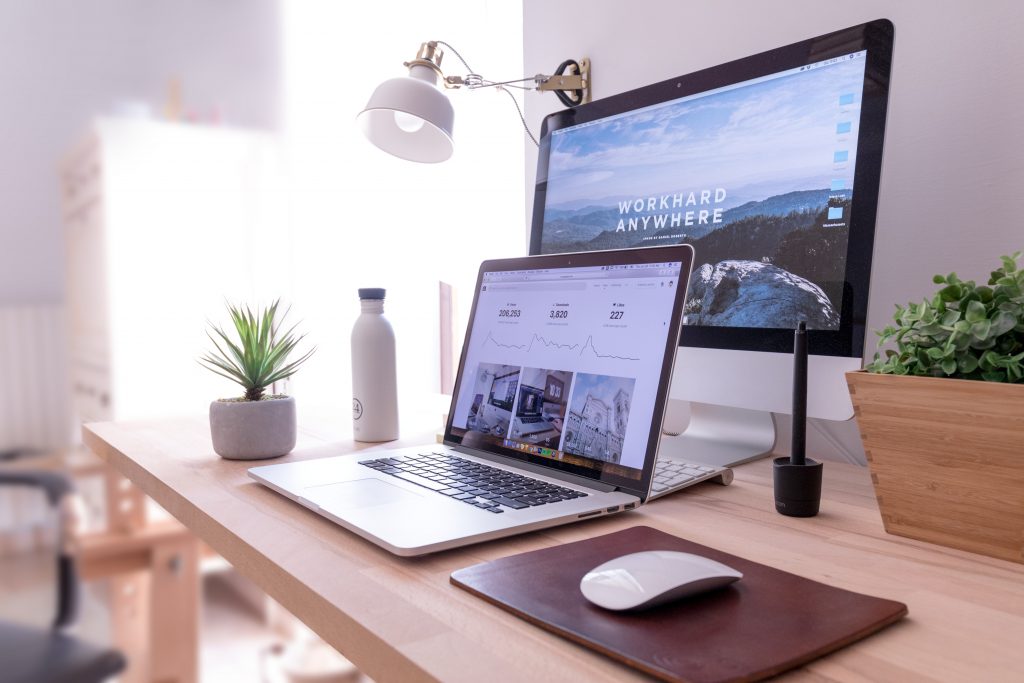The Future of Atlanta: How Building Practitioners Adapt to a Post-Pandemic Market
By 2030, Atlanta’s metropolitan population is projected to grow from 5.9 million people to a whopping 7.5 million. To put that in perspective, the Greater Atlanta Area will have to accommodate the added equivalent population of Jacksonville, Florida. Amazingly, this upcoming decade will see Atlanta’s population grow more rapidly than it did during the previous two decades, with an average growth rate of 2.4%, according to The Urban Institute. With this boom in population growth, Atlanta is on track to be the fourth fastest-growing metro in the nation.
Needless to say, the landscape of Atlanta is changing—and fast. This, coupled with the economic uncertainty wrought by Covid-19, makes building practitioners eager to learn how best to adapt to meet the demands of their clients in a post-pandemic market.

Bisnow Atlanta, a digital media company that highlights commercial real estate news, recognized the building community’s need for new information, adaptive practices, and a better understanding of how emerging technology may help their businesses navigate the current unpredictability of the market. With these needs in mind, Bisnow Atlanta kicked off 2021 by hosting a Digital Summit Event: Atlanta Architecture & Design Outlook. The event included two panel discussions with various industry professionals, followed by speed networking.
The first panel discussion hosted four industry experts: Portman Architects Principal & Design Director, Gordon Beckman; MurphyMeyers founder, Lindsay Murphy; Site Solutions’ Partner Scott Jones; and Dwell Design Studio CEO, Jason Shepard.
The panel of professionals discussed their expertise and industry insights, the future of the economy, the current status of their businesses, and how each of their firms is adapting. The focus was on Atlanta’s emerging trends and the ways in which practitioners can rethink the current market’s unique conditions as opportunities for creativity and new business.
Considering how relevant and pressing these issues are, the conversation was very lively and refreshingly hopeful. With unflinching determination and optimism, the panel acknowledged the precarious conditions of a post-pandemic world while boldly envisioning its creative potential. As the discussion progressed, a specific theme arose in response to essentially every question: resilience.
It is true that some minor physical and logistical changes in building and interior design will be necessary in a post-pandemic market; however, one of the biggest changes repeatedly mentioned was a fundamental shift in perspective of building occupants/users. Ultimately, it seems that people’s perspectives have changed from conforming their lives around work to conforming work around their lives.
Portman Architects Principal Beckman drove this point home by stating, “The next generation wants life-work balance. They want to do what they need to maintain a living, but also to enjoy life, and a lot of that revolves around getting outside and connecting with nature.”
For better or worse, the pandemic has changed business as usual to business as lifestyle.


What we are observing is a massive collective adaptation to a global danger in the environment. The pandemic is sparking a paradigm shift with the comprehensive adoption of emerging software and digital technologies that enable distributive remote work and virtual networking. As of today, most people who can work remotely have been doing so for 329 days, rendering many existing buildings of offices, hotels, restaurants, and other ancillary businesses nearly obsolete empty shells.
Looking forward, many people may very well return to “normal” by going back to the pre-pandemic routine; however, industry experts are indicating that people are now all too aware that most businesses can now remain digital and physically remote. Therefore, what will be the incentive for people to return to the office or other more socially oriented program types besides to collaborate?
Office and hotel architects and designers will have to design spaces that draw people out of their homes by creating an ultimately flexible interior environment. And while the demand for commercial brick-and-mortar is slowing down, the panel articulated how this emerging demand for increased work-life flexibility can be seen as a tremendous threshold of opportunities.
This unique moment in time is a call to action to rethink the building industry as a whole. Beckman emphasized, “This time is forcing the industry to hit the reset button. It is calling us to really reevaluate who we are, what we value, and how we want to live going forward.”
Building practitioners are being called to perform extensive renovation and retrofication of the existing built environment. Just like in natural systems, difficult environments demand and precipitate resilience from the organisms that inhabit them. In this way, the pandemic is testing the resilience of our economy and built landscape.
To adapt effectively, building practitioners must imbed resilience into their designs, business practices, and even Pro Formas. Likewise, it is critical to share new knowledge and design education with our teams, our clients, our partners, and the public on the value proposition of resilient design and intelligent adaptive development.

Many building practitioners have been advocating sustainable adaptive reuse and program conversion for years, yet the market was too hot to not take risks with new construction. Now, the Covid-19 pandemic is serving as a catalyst, demanding those fundamental improvements to the built environment happen now.
To further articulate the parallels between post-pandemic health and wellness with resilient, sustainable, and integrative design, Beckman said, “This goes back to the wellness idea—the idea that we can design public green spaces that are inviting places to meet and enjoy nature within relatively dense urban environments. The idea is to take the ‘wellness factor’ and increase it from the building scale to the urban scale so that the whole city becomes a well-connected, walkable, sustainable, and energized landscape.”

As financing may become less accessible over the next two to five years, many owners and developers will probably use this time to take inventory of their existing assets, determine where reinvestment is most appropriate, renovate their older/underperforming building stock, retrofit spaces where program conversion is needed, and optimize energy performance across asset classes. To not do so would mean remaining in an unpredictable market without any contingency plan, increasing significant risk across their portfolios.
With this in mind, owners and developers looking to mitigate risk caused by the pandemic will be seeking architects and designers to help facilitate those action items for their existing assets. At Portman Architects, we are utilizing the integrative design process to mitigate the cost of inefficiency, and Beckman articulated the benefits of this method by saying, “In terms of controlling cost, we have embraced an integrative system where we bring all the players together, including general contractors and subcontractors, early in the design stages of the project so we can better manipulate the financial model and the design model coherently.”
Even with a potential recession in the future, there are innumerable opportunities for building practitioners to drastically improve the quality of their indoor environments, convert offices and hotels to residential units, and integrate sustainable technology throughout their existing assets. In this way, building practitioners can adapt their properties to ensure their survival in a market where they might otherwise fail.
Those professionals with vision and agility will capitalize on these trends while the window of opportunity exists.
The Atlanta Architecture & Design Outlook panel’s theme of resilience addressed these issues with an intrinsically holistic methodology that adds value to clients’ properties and the public realm. Likewise, Portman Architects understands that generating creative design solutions that meet the needs of our clients is the utmost critical goal. Our firm recognizes that those design solutions that leverage the principles of resilience reinforce the triple bottom line: people, planet, profit.
Adaptive reuse, historic preservation, and sustainable energy-performance optimization are critical market opportunities that stand to not only regenerate a healthier built environment for owners, users, and the public, but also generate revenue for building practitioners during slower economic cycles.
Most importantly, these opportunities imbed financial, ecological, and social resilience in Atlanta’s landscape. Interested in learning more about the principles of resilient design or working with Portman Architects to revamp your project with the latest design insight? Check out our projects!

Coston has a vision for the future—and it’s green. He’s dedicated his life and career to becoming a green building professional. Before joining Portman, Coston worked both as a Photovoltaic Solar-system Designer for Radiance Solar and as a Lead Solar Technician for SolarCity. Helping design and build many of the commercial and industrial solar projects in Georgia, he’s also earned his certification in Sustainable Design in 2013.
Coston holds a BA in Interdisciplinary Studies with concentrations in Environmental Science, Geography, Sociology and Economics from Georgia College and State University. He earned his Master of Architecture from Georgia Tech in 2017 and the following year earned his Master of Science in Urban Design. Coston’s academic research focused on net-positive regenerative architecture, urban design and real estate development, entitled: ‘Design to make places that produce more than they consume.
Give us a call at 404-614-5555, or email the author at cdickinson@portmanarchitects.com
